Complete Solutions to Transmission Of Heat : Radiation of chapter THERMAL PROPERTIES OF MATTER of Class 11 book with complete answers and questions
| Class 11 | PHYSICS |
| Chapter | THERMAL PROPERTIES OF MATTER |
| A2Z | Transmission Of Heat : Radiation |
| Number Of Questions | 28 |
| Academic Year | 2023-24 |
The rectangular surface of area `8 cm xx 4 cm` of a black body at temperature `127^(@)C` emits energy `E` per section if length and breadth are reduced to half of the initial value and the temperature is raised to `327^(@)C`, the ratio of emission of energy becomes
View SolutionTwo spheres of the same material have radii `1m` and `4m` and temperatures `4000K` and `2000K` respectively. The ratio of the energy radiated per second by the first sphere to that by the second is
View SolutionA black body at high temperature `T` `K` radiates energy at the rate of `E W//m^(2)`. When the temperature falls to `(T//2) K`, the radiated energy will be
View SolutionThe rate of dissipation of heat by a black body at temperature `T` is `Q`. What will be the the rate of dissipation of heat by another body at temperature `2T` and emissivity `0.25`?
View SolutionThe wavelength of maximum intensity of emission of solar radiation is `lambda_(m) = 4753Å` and from moon it is `14 mm`. The surface temperature of sun and moon are: (Given `b = 2.898 xx 10^(-3) "metre"// "Kelvin")`
View SolutionA black body is heated from `7^(@)C` to `287^(@)C`. The ratio of radiation emitted is:
View SolutionThe temperature of a body is increased by `50%`. The amount of radiation emitted by it would be nearly
View SolutionThe spectrum of a black body at two temperatures `27^(@)C` and `327^(@)C` is shown in the figure. Let `A_(1)` and `A_(2)` be the areas under the two curves respectively. Find the value of `(A_(2))/(A_(1))`
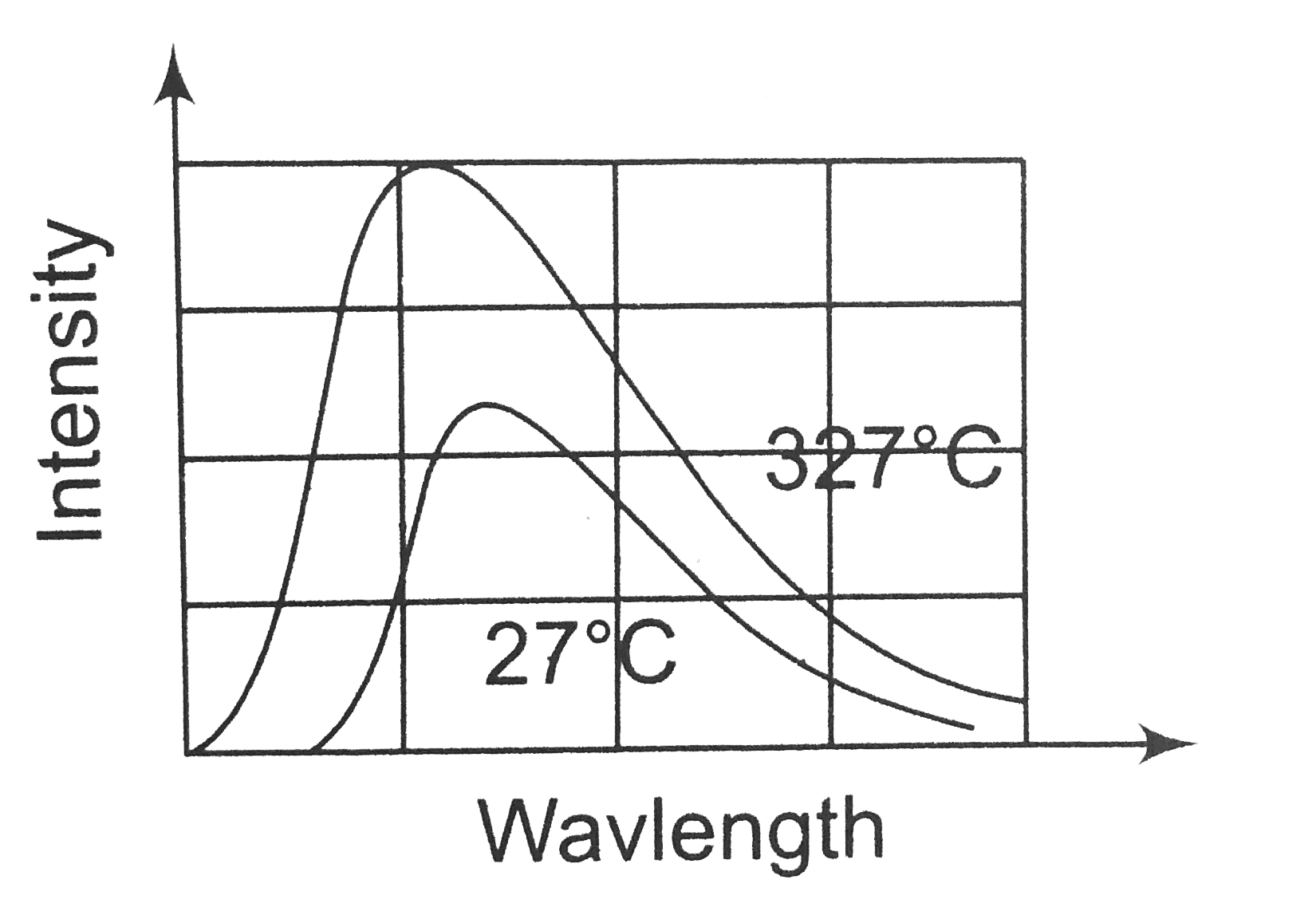
View SolutionThe emission spectrum of a black body at two different temperatures are shown by curves `P` and `Q` (as shown in figure). The ratio of the areas under the two curves `P` and `Q` will be
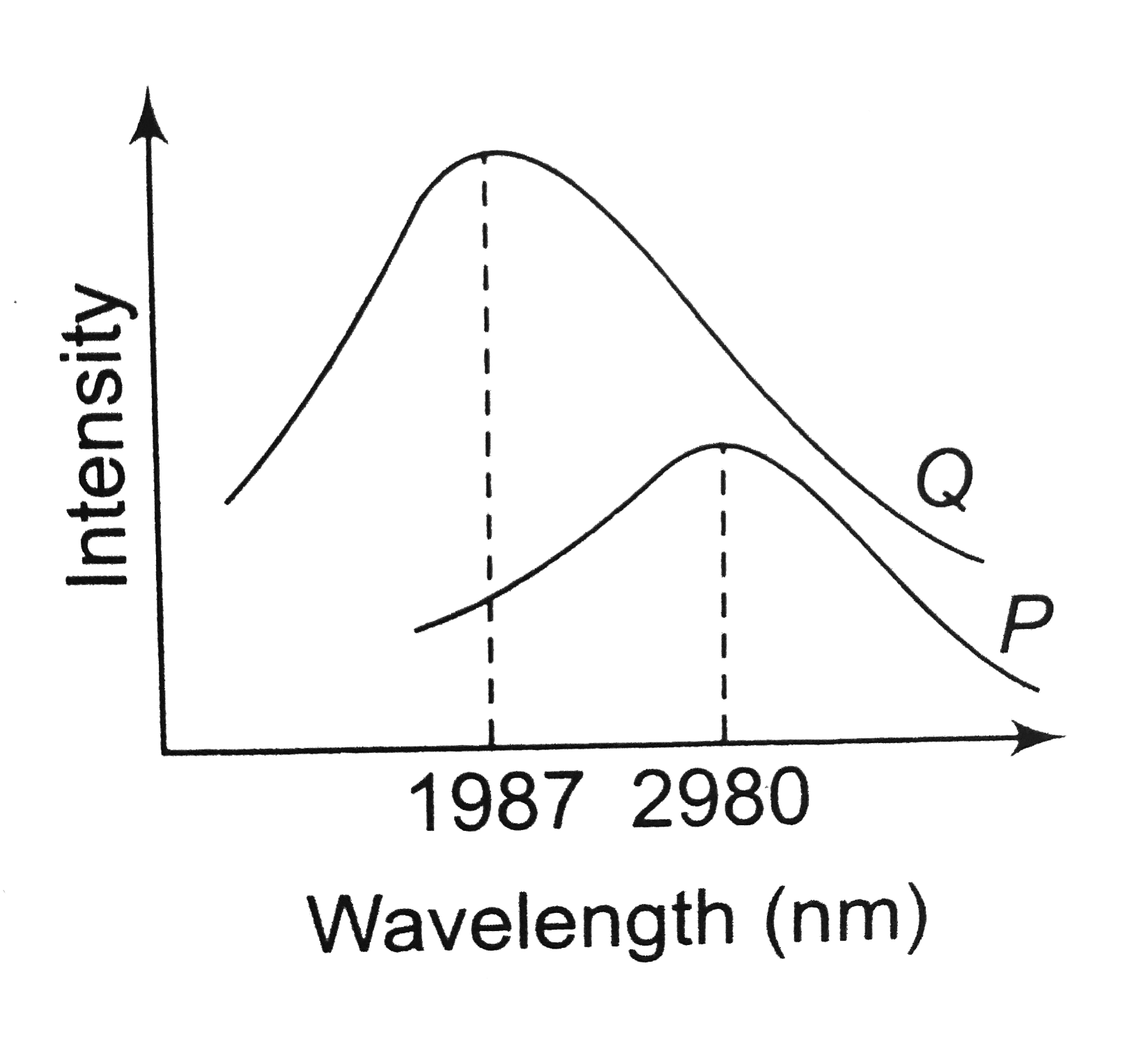
View SolutionBy virtue of some internal mechanism, temperature of spherical shell is maintained in steady state which emits radiation like black body while kept in vaccum and isolated from all radiation. If this shell is enveloped by another shell `B` of same radius, still emitted like a black body, find the ratio of temperatures of shell `B` and shell `A` when it was alone:
View SolutionA calorimeter of mass `0.2 kg` and specific heat `900 J//kg-K`. Containing `0.5 kg` of a liquid of specific heat `2400 J//kg-K`. Its temperature falls from `60^(@)C` to `55^(@)C` in one minute. Find the rate of cooling.
View SolutionIt takes `10 min` to cool a liquid from `61^(@)C` to `59^(@)C`. If room temperature is `30^(@)C` then find the time taken in cooling from `51^(@)C` to `49^(@)C`.
View SolutionThe initial temperature of a body is `80^(@)C`. If its temperature falls to `64^(@)C` in `5` minute and in `10` minute to `52^(@)`. Find the temperature of surrounding.
View SolutionTwo circular disc `A` and `B` with equal radii are blackened. They are heated to same temperature and are cooled under identical conditions. What inference do your draw from their cooling curves?
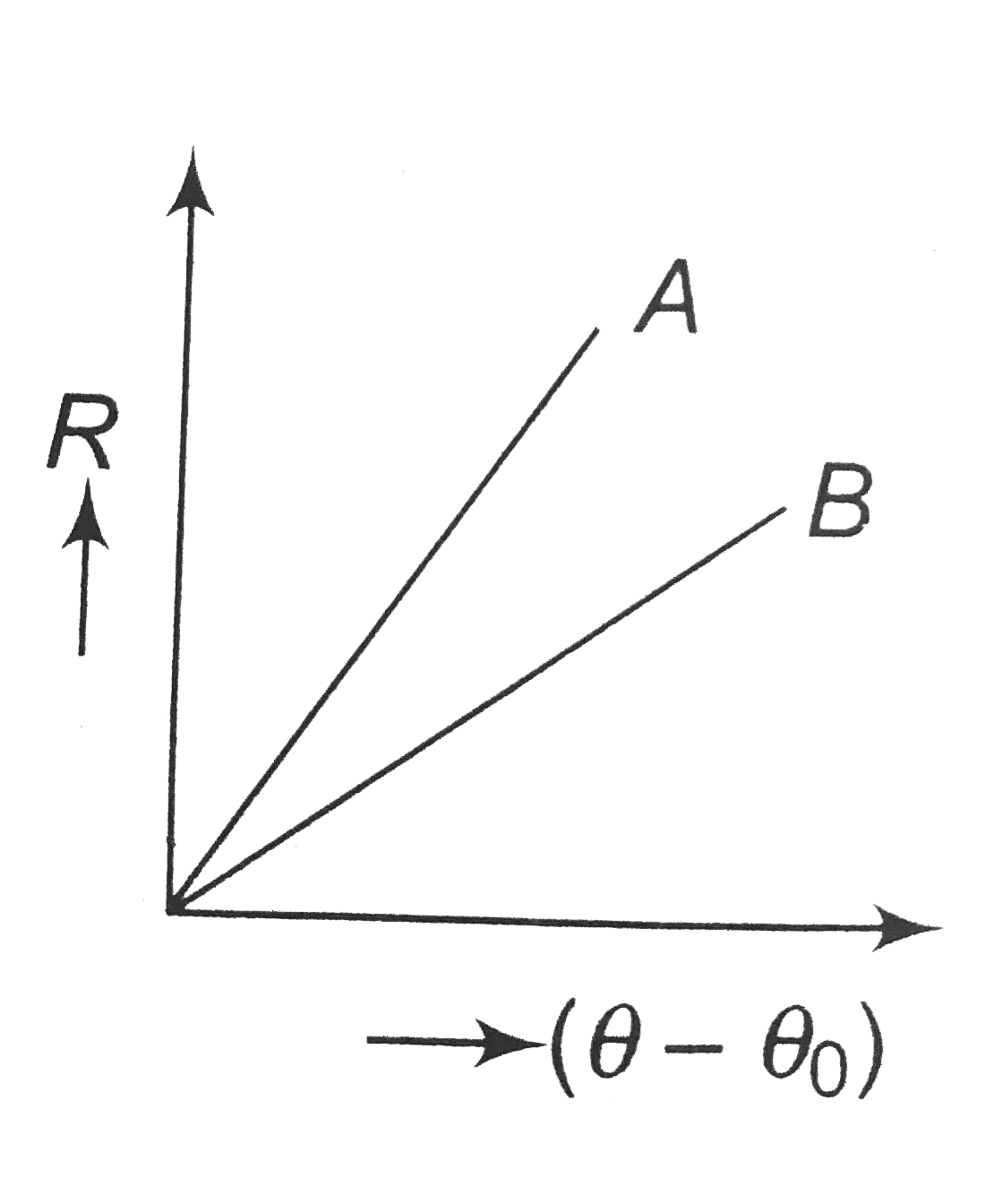
View SolutionA blackbody is at a temperature of 2880K. The energy of radiation emitted by this object with wavelength between 499nm and 500nm is `U_1`, between 999nm and 1000nm is `U_2` and between 1499 nm and 1500 nm is `U_3`. The Wien constant `b=2.88xx10^6nmK`. Then
View SolutionThe radiation emitted by a star `A` is `1000` times that of the sun. If the surface temperature of the sun and star `A` are `6000 K` and `2000 K` respectively. The ratio of the radii of the star `A` and the sun is:
View SolutionA planet radiates heat at a rate proportional to the fourth power of its surface temperature T. If such a steady temperature of the planet is due to an exactly equal amount of heat received from the sun then which of the following statement is true?
View SolutionWhen the temperature of a black body increases, it is observed that the wavelength corresponding to maximum energy changes from `0.26 mu m`. The ratio of the emissive powers of the body at the respective temperature is:
View SolutionThe maximum energy is the thermal radiation from a hot source occurs at a wavelength of `11 xx 10^(-5) cm`. According to Wien’s law, the temperature of this source (on Kelvin scale) will be n times the temperature of another source (on Kelvin scale) for which the wavelength at maximum energy is `5.5 xx 10^(-5)` cm. The value of `n` is:
View SolutionA body cools from `50^@C` to `49^@C` in 5 s. How long will it take to cool from `40^@C` to `39.5^@C`? Assume the temperature of surroundings to be `30^@C` and Newton's law of cooling to be valid:
View SolutionThe rate of cooling at `600 K`. If surrounding temperature is `300 K` is `H`. The rate of cooling at `900 K` is
View SolutionA rectangular body has maximum wavelength `lambda_(m)` at `2000 K`. Its corresponding wavelength at `3000 K` will be
View SolutionA black body radiated maximum energy around a particular wavelength at a given temperature. If the temperature of the black body is now changed so that it radiates maximum energy around a wavelength `n` time the original wavelength `(n lt 1)` then power radiate by it will increases by a factor of:
View SolutionA sphere of `3 cm` radius acts like a black body. If it is in equilibrium with its surrounding and absorb `30 K` watt of energy radiated to it from the surrounding. Then the temperature of the sphere will be:
View SolutionThe thermal emissivitites of two bodies `A` and `B` are in the ratio of `1//e`. The outer surface area of the bodies are same and they radiate the energy at the same rate. Find the ratio of the wavelength corresponding to the maximum spherical radiance in the radiation from `A` to maximum spectral radiance in the radiation from `B`.
View SolutionThe graph, shown in the adjacent diagram, represents the variation of temperature (T) of two bodies, x and y having same surface area, with time (t) due to the emission of radiation. Find the correct relation between the emissivity and absorptivity power of the two bodies
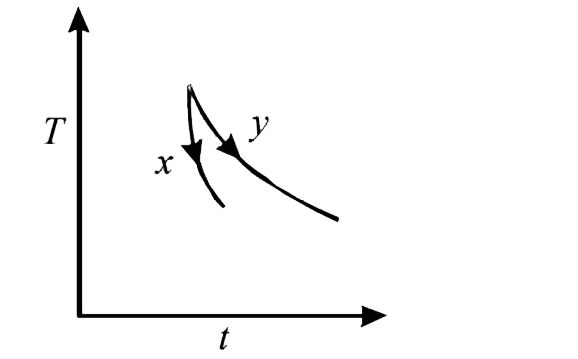
View SolutionThree discs, A, B and C having radii 2m, 4m and6m respectively are coated with carbon black on their outer surfaces. The wavelengths corresponding to maximum intensity are `300nm, 400nm` and `500 nm`, respectively. The power radiated by them are `Q_A, Q_B and Q_C` respectively
(a) `Q_A` is maximum (b) `Q_B` is maximum (c) `Q_C` is maximum (d) `Q_A = Q_B = Q_C`
View SolutionVariation of radiant energy emitted by sun, filament of tungsten lamp and welding arc as a function of its wavelength is shown in figure. Which of the following option is the correct match?
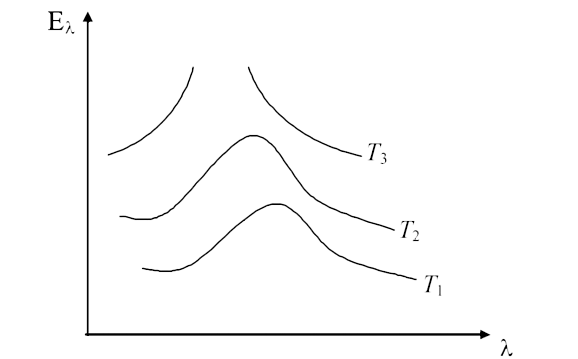
View Solution
Transmission Of Heat : Radiation questions and complete solutions for chapter THERMAL PROPERTIES OF MATTER of A2Z PHYSICS (HINGLISH) of Class 11